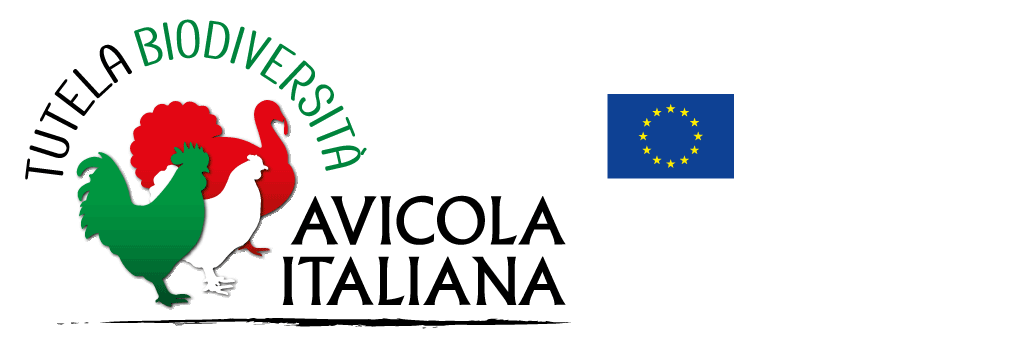Brianzolo
Synonyms or local names: Nostrano (local) turkey
Geographic origin: Lombardy
Geographic distribution: Northern Italy, Brianza
Estimated total population size: 15 (Castillo et al., 2021)
Extinction risk status (FAO, 1998): Critical conserved
Historical origin of the breed
Light turkey originated from Lombardy, traditionally present in rural breeding. Locally known as Nostrano (local) turkey. According to oral tradition, the reticulated silver bronze colour seems to have been prevalent in Brianza in the past.
Brianzolo turkey is similar for both size and colour to Belgian Ronquieres breed. Well-known and appreciated since early 1900, the Brianzolo population risked extinction. It was however rescued and conserved thanks to fancy breeders’ activity, which lead to the acknowledgment of a breed standard on behalf of the Italian Federation of Poultry Breeds (Federazione Italiana Razze Avicole, FIAV) in 2013.
Bibliography
Manuale STANDARD ITALIANO DELLE RAZZE AVICOLE (ITALIAN STANDARD OF POULTRY BREEDS Manual), FIAV, 2013-14.
Qualitative morphological traits
Plumage colours: Reticulated silver bronze in different degrees of intensity
Colour features: Bi-colour
Colour pattern: In the male, neck, breast, and upper part of the back brown-grey with evident dark mesh-like pattern. Primaries dark grey, with fine whiteish-white peppering at the end. Outer colour dark grey with very thin white edging, inner colour dark grey with silver white peppering at the end. Secondaries: from the first to the fifth feather, ivory with intense dark grey peppering on the central part, mainly on rachids’ sides; other feathers iridescent brown with black peppering, with a white band at the end on the feathers that are closest to the body. Main wing coverts’ outer colour cinnamon and inner colour dark grey close to the rachids, fading to cream with dark grey peppering. All feathers end up with a thin black edging with white tip. Small wing coverts ground colour black with brown-cream mesh-like pattern; feathers end up with a black band with strong metallic lustre. Main tail feathers: light cinnamon colour with peppering on the part hidden by tail coverts and ending up with a black band with strong metallic-green luster and a white band at the edging. Main tail coverts cinnamon on the visible half, while the hidden half has a strong peppering which forms a mesh-like pattern. Small tail coverts have a net-like pattern on cream ground, with a black band with iridescent luster and a band with cream barbs at the end. Remaining plumage of the back alternately crossed with distinct parallel black and brown stripes down to the shoulders. In the female, colours approximately identical to the male’s, but with more evident mesh-like pattern. Feathers on back and breast end up with a white edging. Small wing coverts and upper part of the back have a black ground with cream mesh-like pattern. Belly and legs ivory with faint mesh-like pattern also in the down.
Head: Naked in the male, slightly feathered in the female, centrally on the skull
Neck: Medium-lengthed, arched
Caruncles: Average development; on head and on naked areas of the neck, larger at the base; red, often orange in young birds, changing to blueish-white when excited; the fleshy protruberance above the beak elongates during excitement, more in the male than in the female, retracts while feeding and is pendant when displaying.
Iris colour: Dark
Beak colour: Light brown with slight blackish stripes
Shank colour: Pinkish with dark scales
Shank feathering: Free from feathers
Quantitative morphological traits

Genetic traits
Characterisation of the breed with Single Nucleotide Polymorphisms (SNPs)
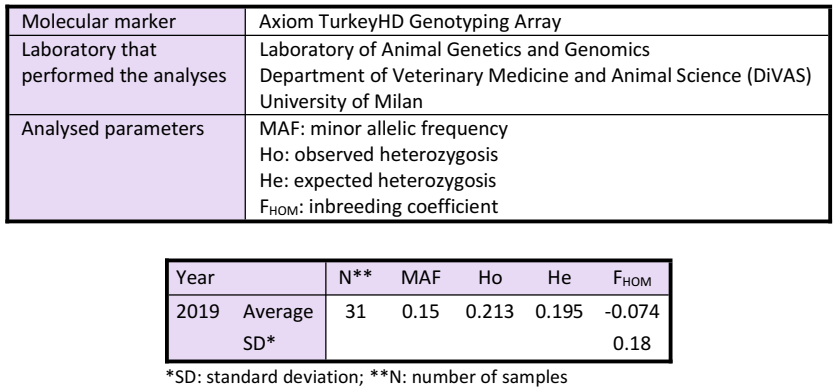
Characterisation of nucleus populations with microsatellites and mating plans
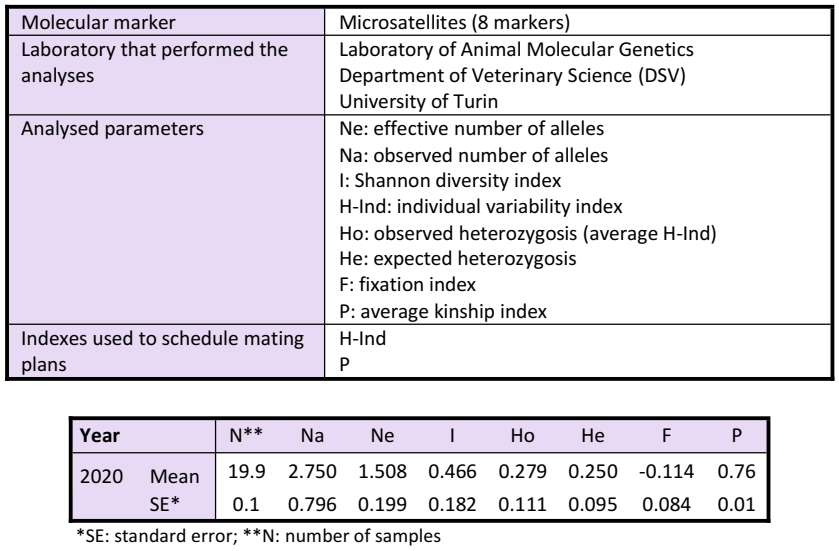
Reproductive and productive quantitative traits
Oviposition, brooding and incubation data
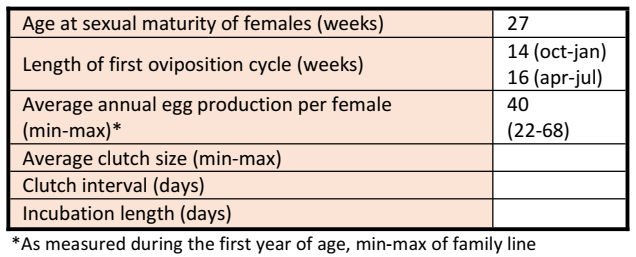
Egg-quality traits

Reproductive traits

Body weight and growth data
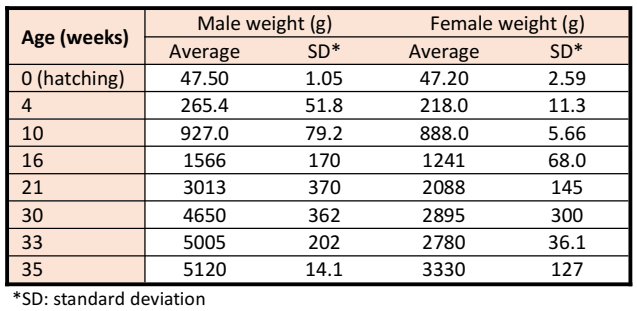
Rearing traits
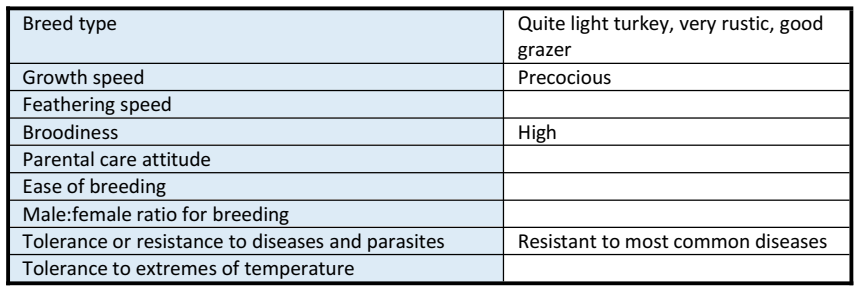
The presented data were registered in the nucleus population conserved at the University of Milan (UniMI).
Latest update: July 5th, 2024
Download the technical data sheet of the Brianzolo breed:
(The layout of the data sheet is ready for the booklet format. Print on both sides of paper, selecting “flip on short edge”.)
Germplasm collection
The breed has yet to be conserved in our Cryobank.
